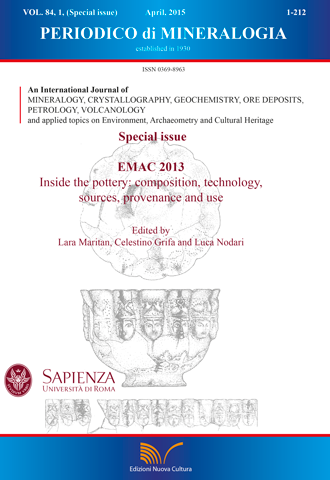Elemental Analysis Study of Glazes and Ceramic Bodies from Mamluk and Ottoman Periods in Egypt by Laser-Induced Breakdown Spectroscopy (LIBS)
DOI:
https://doi.org/10.2451/2015PM0007Keywords:
LIBS, Ceramics artifacts, Elemental analysis, Spectra, Plasma, Emission.Abstract
This paper reports on the analysis of archaeological glazed ceramic artifacts, found in Al-Fustat excavation located in Old Cairo. The objects date back to Mamluk period (1250-1517 AD) and through Ottoman period (1517-1805 AD). The semi-quantitative analysis on the multi-layered ceramic findings regard colored glazes decorations present on the surface and clay bodies were carried out by Laser Induced Breakdown Spectroscopy (LIBS). The results obtained by LIBS were compared with other analytical techniques such as Scanning Electron Microscopy coupled with energy dispersive X-ray spectroscopy (SEM/EDS) and X-ray diffraction (XRD). The obtained results gave indications about the manufacturing process and the raw materials of the ancient ceramics belong the Mamluk and Ottoman periods in Egypt, that help in the conservation process. The analysis demonstrate the potential of the LIBS technique to perform routine, rapid, on-site analysis of archaeological ceramic, which leads to the quick characterization or screening of different types of ancient ceramics objects.


